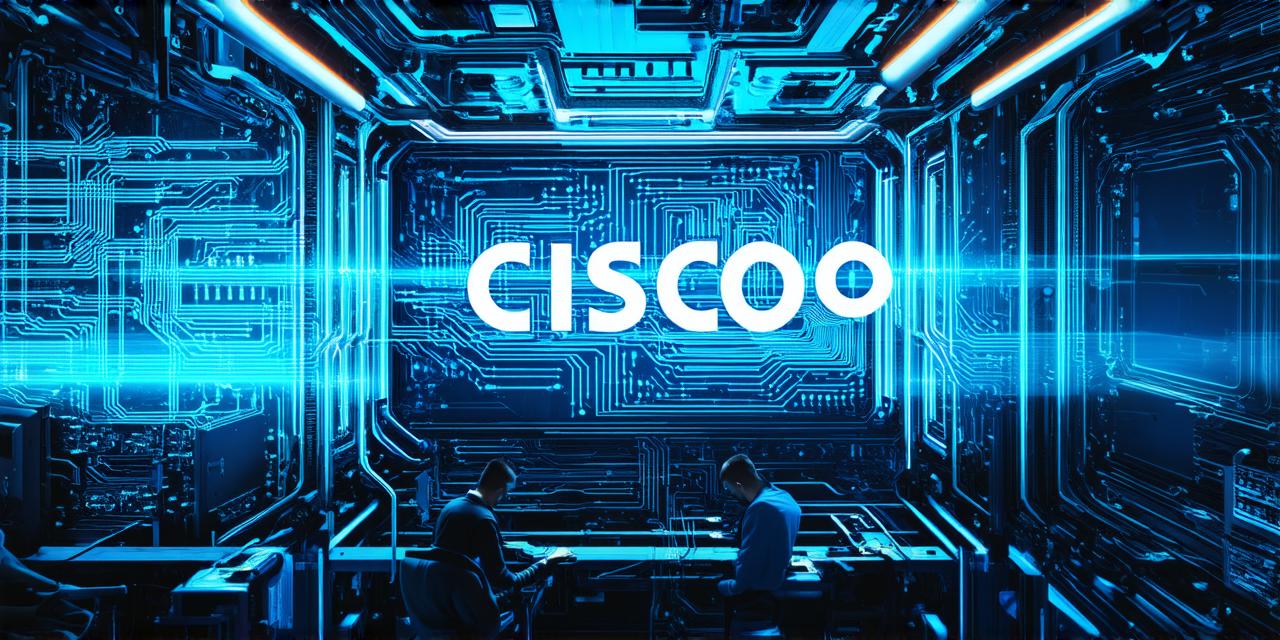Introduction

The Internet of Things (IoT) has transformed the way we interact with our environment. From smart homes to industrial automation, IoT devices are now an integral part of our daily lives and businesses. However, managing these devices can be a complex task, especially when it comes to securing them against cyber threats.
What is Cisco IOS XE?
Cisco IOS XE is a modular operating system that was developed to replace the traditional monolithic IOS (Internetwork Operating System) used in Cisco networking devices. Unlike IOS, which was designed for legacy hardware, IOS XE is built on modern software principles, making it more scalable, flexible, and secure than its predecessor.
Cisco IOS XE is designed to run on a wide range of Cisco networking devices, including routers, switches, and firewalls. It offers a modular architecture that allows you to customize your device based on your specific needs and requirements. This means that you can choose the features and capabilities that are most important for your application, rather than having to deal with a bloated monolithic operating system.
Key Features of Cisco IOS XE
Cisco IOS XE offers a range of features and capabilities that make it an ideal choice for IoT security and management. Some of the key features of Cisco IOS XE include:
1. Modular architecture: Cisco IOS XE is designed to be modular, allowing you to customize your device based on your specific needs and requirements. This means that you can choose the features and capabilities that are most important for your application, rather than having to deal with a bloated monolithic operating system.
2. Security: Cisco IOS XE offers a range of security features designed specifically for IoT devices, including role-based access control, device profiling, and anomaly detection. These features help to protect against cyber threats and ensure that your devices are secure and reliable.
3. Scalability: Cisco IOS XE is designed to be scalable, allowing you to add new features and capabilities to your device as needed. This means that you can easily upgrade your device to meet changing business needs and support new applications and services.
4. Flexibility: Cisco IOS XE offers a range of programming and scripting options, including Python, YAML, and RESTful APIs, making it easy to automate tasks and manage your devices programmatically. This means that you can streamline your operations and reduce the need for manual intervention.
5. Integration: Cisco IOS XE is designed to integrate with a range of third-party tools and services, including cloud platforms, analytics tools, and security solutions. This means that you can easily extend the capabilities of your devices and integrate them with existing systems and processes.
Case Study: Using Cisco IOS XE for IoT Security and Management
A leading manufacturer of industrial equipment needed to secure its IoT devices against cyber threats. The company had a large number of devices spread across different locations, making it difficult to manage them effectively. After evaluating several options, the company chose Cisco IOS XE as its operating system for IoT security and management.
Using Cisco IOS XE, the company was able to implement role-based access control and device profiling, which helped to protect against unauthorized access and ensure that only authorized users could access sensitive data. The company also used anomaly detection to monitor its devices for unusual activity, allowing it to quickly identify and respond to potential security threats.
In addition, the company was able to use Cisco IOS XE’s scalability and flexibility to upgrade its devices as needed, adding new features and capabilities to support new applications and services. The company also used Cisco IOS XE’s integration with cloud platforms and analytics tools to gain deeper insights into its devices and optimize its operations.
